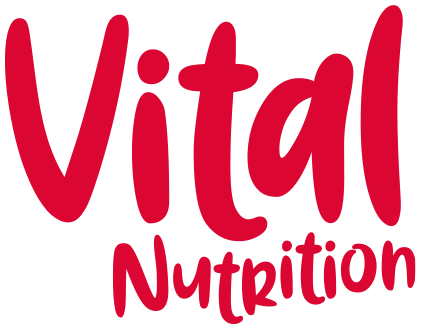Do you feel the burn?
Pain, burning and bloating are common digestive complaints. Functional dyspepsia is thought to affect one in five people, with symptoms that include feeling bloated after eating, feeling full quickly and pain or burning.
Whether your GP prescribed antibiotics or PPI (proton pump inhibitor) medications like omeprazol, lanzorpazole or esomeprazole, making a few changes to your diet and eating habits is important too.
There are many different causes for this sort of upper gastrointestinal discomfort - from Helicobacter pylori to allergies and inflammation, but there are some common diet changes that can really help to support digestion, whether symptoms are treated with medication or not.
1. Slow it down. Take time to enjoy your food. Don't wolf it down without a second thought. Help you digestion by taking your time and savouring your meals instead of eating on the go or eating too quickly.
2. Eat little and often. Smaller meal sizes and not leaving too long between meals can help reduce symptoms in some people.
3. Use herbs in place of spices. Chilli, cayenne and other spices can irritate the digestive tract and worsen symptoms for some. Try using ginger and turmeric (with anti-inflammatory and anti-nausea effects) in place of chilli.
4. A diet high in processed foods has been associated with IBS, heartburn, pain and bloating. It is always better to cook food from scratch and know exactly what is going into your diet, but if this is a step too far, at least start reading food labels and make sure you recognise all the ingredients as real food, rather than something that reads like a chemical experiment.
5. Rethink your drinks. Caffeine, alcohol, fizzy drinks and fruit
juice can exacerbate symptoms, so cut back and see if it makes a difference to symptoms of pain, burning and discomfort. Herbal teas or green tea make good alternatives to tea or coffee. Check out the no or low alcohol drink range and replace fizzy drinks with sparkling water or kombucha - a naturally sparkling, fermented drink with probiotics to help
support gut health.
6. Try a short-term dairy free diet. Dairy products like milk,
yoghurt ,cream and cheese have been linked with digestive discomfort in several studies and although dairy won't be a trigger for everyone with symptoms, the best way to find out if this is a trigger for you is to cut all dairy out of your diet for 3-4 weeks and see if it makes a difference.
Use alternatives like plant-based milks such as oat milk, soya milk or almond milk. Look out for coconut, oat or soya based natural yoghurts and replace cheese with vegan alternatives, or houmous - good on crackers!
7. Low gluten diet. Alongside dairy, gluten is another potential
trigger for some, but not all, people. Found in wheat, rye, barley and oats, it is a common ingredient in our diets here and can be hard to avoid. You could try a gluten exclusion diet for 3-4 weeks, but it might be enough just to reduce, rather than avoid gluten in your diet. Eat less bread, look out for red lentil pasta or replace pasta with rice, cut back on biscuits, scones and pizza bases - all good advice generally, but especially if you have digestive upset.
8. Cut back on fatty foods. High fat foods have been associated with nausea and pain. Choose low fat products when you can, but take care that the fat has not been substituted for sugar. For example, use less oil, eat
less butter, choose leaner cuts of meat, choose low fat yoghurts.
9. Be selective with your vegetables. Onion, cabbage, peppers, peas and beans are some common triggers of gas and bloating, so cut back a little.
10. Eat more fibre. Fibre is important to help support digestive
health form one end to the other! Soluble fibre from fruit and veg, brown rice, oats, milled flaxseed, beans and lentils help support a healthy digestive tract.
11. Include some anti-inflammatory foods like omega-3 rich oily fish (2-3 x week), colourful vegetables, milled flaxseed, ginger and turmeric.
Nutritional supplements like digestive enzymes and probiotics have their place too, but try some of these dietary changes first.

